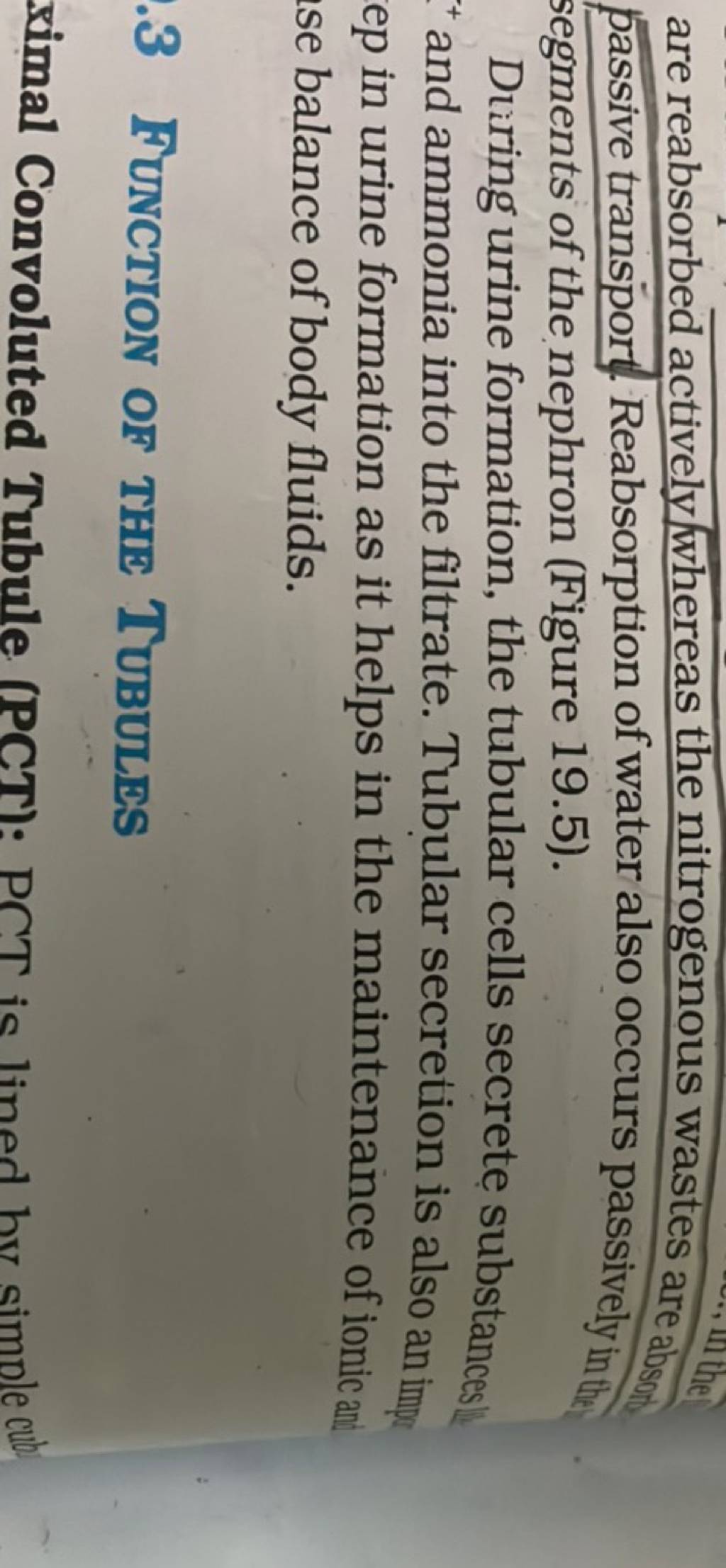Question
Question asked by Filo student

are reabsorbed actively whereas the nitrogenous wastes are absorp passive transport. Reabsorption of water segments of the nephron (Figure 19.5). Diring urine formation, the tubular cells secrete substances. and ammonia into the filtrate. Tubular secretion is also an impe ep in urine formation as it helps in the maintenance of ionic anis ise balance of body fluids. .3 Function of the TUbUles
Found 4 tutors discussing this question
Discuss this question LIVE
10 mins ago
Filo tutor solutions (2)
Learn from their 1-to-1 discussion with Filo tutors.

One destination to cover all your homework and assignment needs
Learn Practice Revision Succeed

Instant 1:1 help, 24x7
60, 000+ Expert tutors

Textbook solutions
Big idea maths, McGraw-Hill Education etc

Essay review
Get expert feedback on your essay

Schedule classes
High dosage tutoring from Dedicated 3 experts
Practice more questions on Human Physiology
Question 2
Easy
Views: 5,958
Question 3
Easy
Views: 5,734
Question 4
Easy
Views: 5,644
Students who ask this question also asked
Question 2
Views: 5,980
Question 3
Views: 5,522


Stuck on the question or explanation?
Connect with our Biology tutors online and get step by step solution of this question.
231 students are taking LIVE classes
| Question Text | are reabsorbed actively whereas the nitrogenous wastes are absorp passive transport. Reabsorption of water segments of the nephron (Figure 19.5).
Diring urine formation, the tubular cells secrete substances. and ammonia into the filtrate. Tubular secretion is also an impe ep in urine formation as it helps in the maintenance of ionic anis ise balance of body fluids.
.3 Function of the TUbUles
|
| Updated On | Mar 16, 2023 |
| Topic | Human Physiology |
| Subject | Biology |
| Class | Class 11 |
| Answer Type | Video solution: 2 |
| Upvotes | 194 |
| Avg. Video Duration | 1 min |



